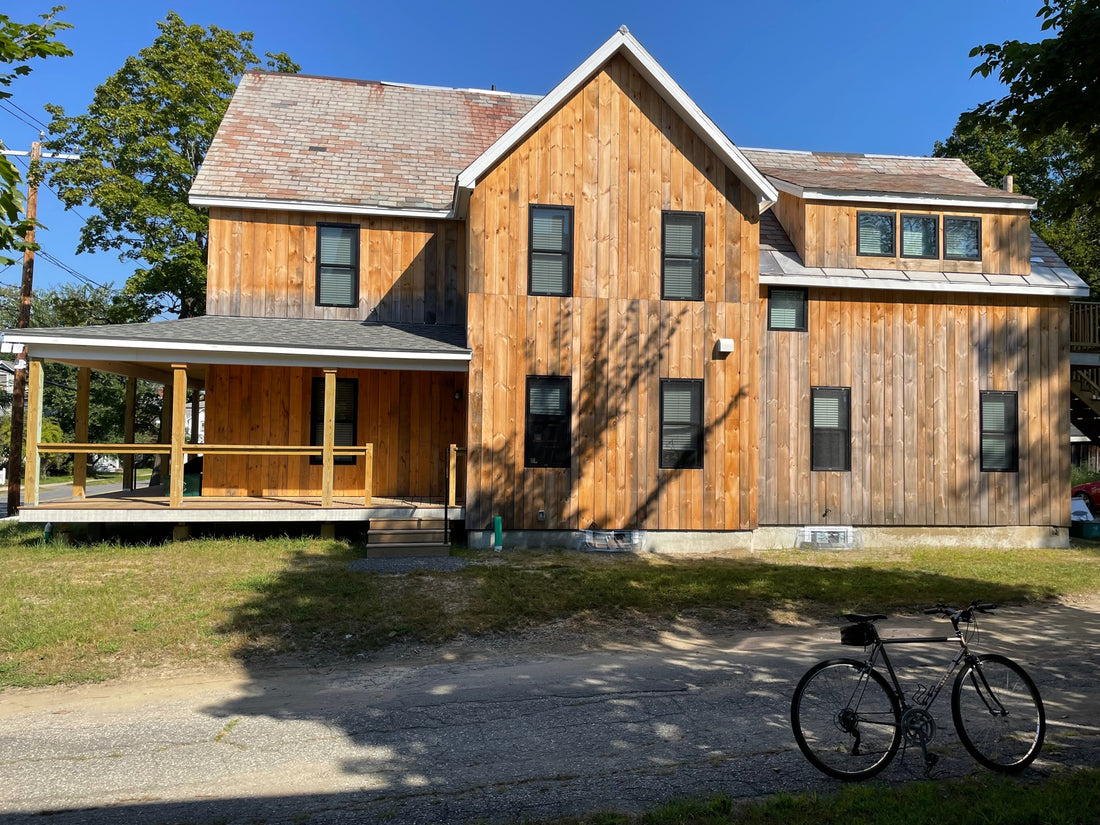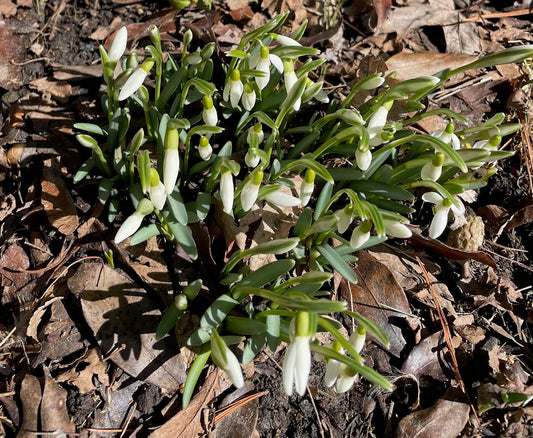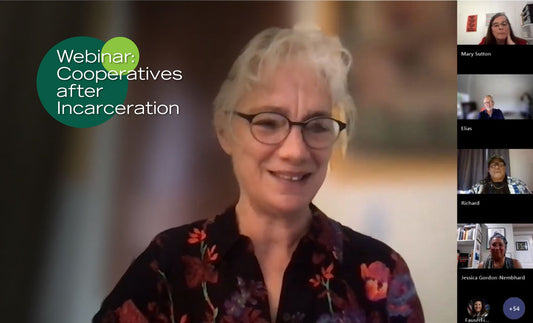The letter below was written collectively by the worker-owners of The Compost Co-operative and Oxbow Design Build Co-operative and published in the Greenfield Recorder on 10/12/23.
October is Co-op Month, and there’s a lot to celebrate. This is a story about two small worker-owned businesses that got together to create three affordable, energy-efficient apartments for people who face barriers to housing.
It took almost three years, but we did it! The Compost Co-operative and Oxbow Design Build Co-operative transformed a dilapidated building in Greenfield into apartments that will last centuries rather than decades. Six people who collectively experienced decades of homelessness and housing insecurity now have homes.
While this is a “red-ribbon” accomplishment, that’s only six people out of tens of thousands who face homelessness and housing insecurity every day in Massachusetts. James Palardy, a worker-owner at the Compost Co-op, points out that “you can have integrity, morals and a great work ethic and still be homeless. Being fully employed at minimum wage is not enough to live on. Literacy issues, technological barriers, and doing everything under duress makes securing a place to live difficult and stressful.”
Programs that are supposed to help people find places to live, such as Section 8, now have waiting lists up to 12 years.
“Some fault greedy landlords and real estate agents for the housing crisis,” says Trenda Loftin, a worker-owner at the Compost Co-op and leader of the project. “Others blame those who ‘just aren’t working hard enough’ to make ends meet. Some point to the concentration of power and wealth of elites who benefit from a system built and sustained by the exploitation of working-class people, people of color, LGBTQ+ folx, people with disabilities, people navigating mental health crises, veterans, immigrants, and those with experience of incarceration. Whatever the explanation, the numbers of people who live without access to safe, affordable shelter continues to surge — and we have to do something about it.”
The worker-owners at Compost Co-op and Oxbow Design Build believe that everyone has a role to play in shifting the structures that perpetuate inequity. Decaying housing stock must be revitalized to provide homes, achieve our climate goals, and keep downtown centers dense and alive. These days, the groups who bear the risk for developing small-scale downtown projects are those with the least resources. Community and systemic investment in one- to four-unit properties, including abandoned buildings, will open a space for more people to participate in the development of housing.
Every single human needs shelter. If Congress diverted just a week’s worth of the Defense Department’s annual budget into affordable, energy-efficient housing, that would be more than $16 billion to defend a basic human right, shelter that people can afford.
Our project received support from community members and from state funds, disbursed by the city of Greenfield, to enhance energy efficiency and secure affordable housing. Everyone we worked with at the city and state level was smart and professional. But had we known beforehand the long-term effects of cutting through the red tape, we would not have applied for those funds.
COVID shutdowns, endless requirements, and our lack of experience with the intricate world of state-subsidized housing all caused delays and resulted in changes to the scope and vision of the project. State funds allowed us to make the building safer and more climate resilient; accepting those funds could jeopardize the project’s long-term financial viability.
Cheaply built housing requires a lot of fuel to heat and uses environmentally harmful materials that contribute to climate change and threaten residents’ health.
“Most affordable housing is not designed to last even 30 years,” says Carl Woodruff, a worker-owner at Oxbow Design Build and general contractor for the project. The Department of Housing and Urban Development (HUD) defines permanent housing as “having an expected design life of at least 20 years.”
High-quality housing, such as the units in this project, should last 300 years — and costs less than twice what a low-quality home costs to build.
“We can’t expect people to pay for a home that should last 300 years over a mortgage period of only 30 years, one tenth of the home’s useful life,” Woodruff says. Spreading out the costs of construction over a longer term, more in line with the life expectancy of the building, would make homes more affordable.
In June, Gov, Maura Healey announced the launch of a Community Climate Bank, the first in the country, to support energy-efficient affordable housing initiatives. As the bank gets going, we hope legislators will streamline the process and make it more accessible to small developers so that we can all participate in much-needed change.
“Having an affordable, secure place to live restores dignity and promotes mental health,” Palardy reflects. “The space to have some serenity gives a sense of accomplishment, a feeling of independence. There is the luxury of privacy, time to read a book, the ability to invite people over and engage with family and friends, rebuild some of those relationships and build new ones. How can you build a house without a foundation?”
https://www.recorder.com/my-turn-Schendler-Affordable-Housing-and-Co-ops-working-together-52507727




